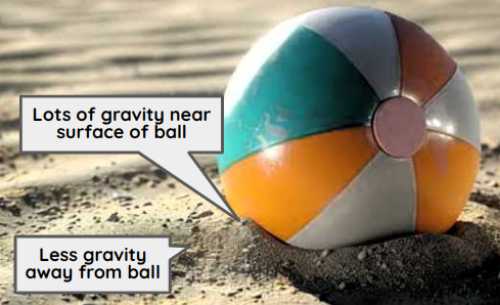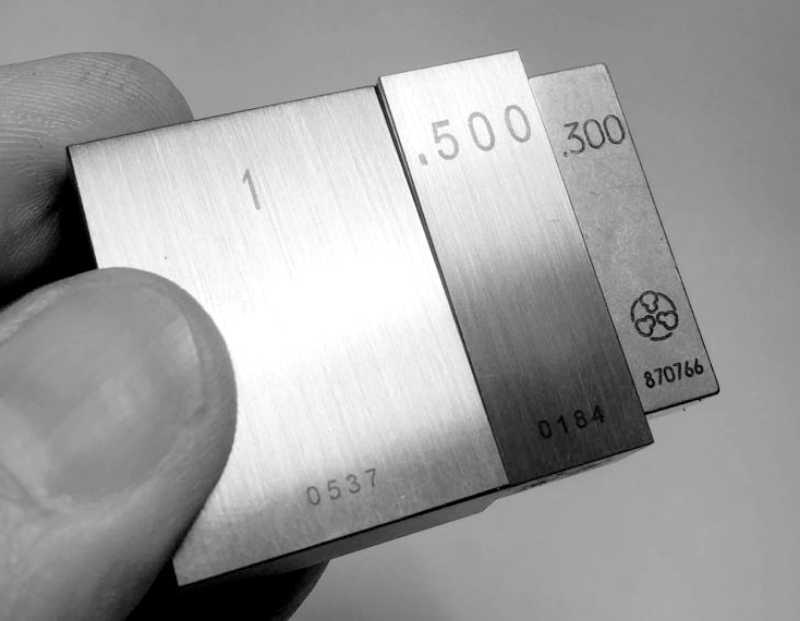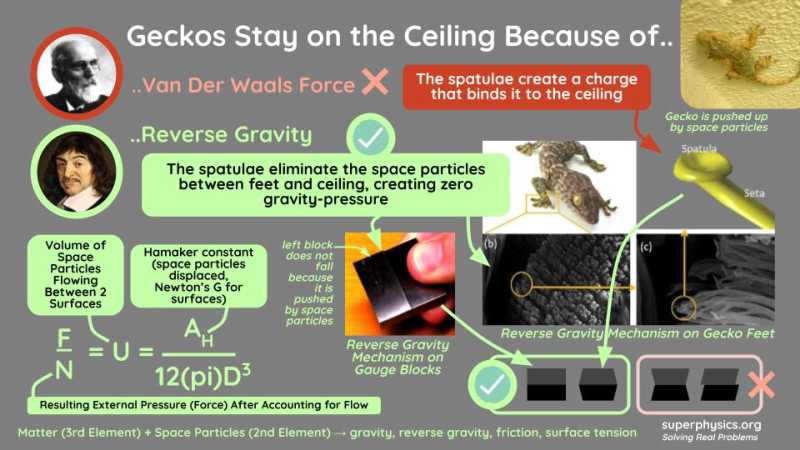Fine Gravity: Van Der Waals Force
Table of Contents
The previous section explained that material or crude gravity comes from the high pressure that arises from low pressure. This is caused by the displacement of space particles by mass.
We are pushed down to earth because the Earth displaces space particles.
Most of these are just above its surface, diminishing the farther you go up and away from the surface. As a result, gravity is weaker as you go up

So below you is low pressure space. This creates a high pressure space above you that then pushes you down.
We can call this as the material gravity of the Earth or a downward gravity.
Fine Gravity
Crude gravity, which we call material gravity, is created by displacing space bluntly with mass.
But gravity can also be produced by displacing space minutely and surgically. We call this fine gravity.
This is done by reducing the pressure between 2 surfaces by eliminating or reducing the flow of the space particles between them.
There are 2 easy examples of this:
- Gauge Blocks
Gauge Blocks are rectangular blocks that are perfectly smooth. Two blocks together thus can have no space between them.
This creates a zero pressure between them and a high pressure outside, which then pushes them together.

Galileo described this way back in 1638, during the same decade that Descartes wrote his theory of gravity via space particles in 1633.
If you take 2 highly polished and smooth plates of marble, metal, or glass and place them face to face, one will slide over the other with the greatest ease. This shows that there is nothing of a viscous nature between them [no liquid virtual space particles]. But when you try to separate them, the plates exhibit such a repugnance to separation. The upper one will carry the lower one with it and keep it lifted indefinitely, even when the latter is big and heavy. This shows [by the pushing of the space-medium] the aversion of nature for empty space.
Galileo
Two New Sciences, Day 1
Rather than call this as a vacuum force, it would be better to call it a pushing force, just to be consistent and simple.
The center area formed by the 2 blocks must be either straight or wider at the center. In this way, this external space-pressure can converge on the center of gravity.
- Gecko Feet: Van Der Waals force
This is done by gecko feet which have tiny flexible hairs called spatulae that insert themselves into the tiny holes and depressions on surfaces to push out the empty space.
- This is similar to fine-grained sand being able to fill a bottle and eliminate all space
This reduces the pressure there creating a high pressure elsewhere. This then ‘glues’ the gecko to the surface.

According to Physics, geckos stay on the ceiling because of a “Van Der Waals force”, an intermolecular binding force, that binds their feet to the ceiling and counteracts gravity
This Van Der Waals force uses charge-based binding between molecules and are therefore electromagnetic.
However, this same force does not seem apply to gauge blocks that stick to each other without electromagnetism.
So we refute the stated mechanism of the Van Der Waals force. We instead apply the same mechanism for gauge blocks.
The “Hamaker constant” A used in Van Der Waals force is therefore the same as Newton’s G, mentioned in the previous section.
The difference is that:
- Newton’s G is the volume of space particles displaced by a body. This has a macro perspective.
- The Hamaker constant is the volume of space particles flowing between surfaces. This has a quantum perspective.

Since G is a constant, then there is a limited weight that reverse gravity can keep up.
This greatly simplifies the concept of gravity:
| Material Superphysics | Physics |
|---|---|
| Material Gravity | Newtonian Gravity |
| Material Gravity | Coulomb’s Law |
| Material Gravity | Inverse Square Law |
| Fine Gravity | Van der Waals Force |
| Fine Gravity | Surface Tension |
| Fine Gravity | Dzhanibekov Effect |
| Rotational Gravity | Dark Matter |
| Rotational Gravity | Einstein’s warping of Spacetime |
| Aetherspace Expansion-Contraction | Dark Energy |
| Aetherspace | Strong Force |
| Liquid Nature of Space Particles | Gravitational Waves |
| Liquid Nature of Space Particles | Equivalence and Weak Equivalence Principles |